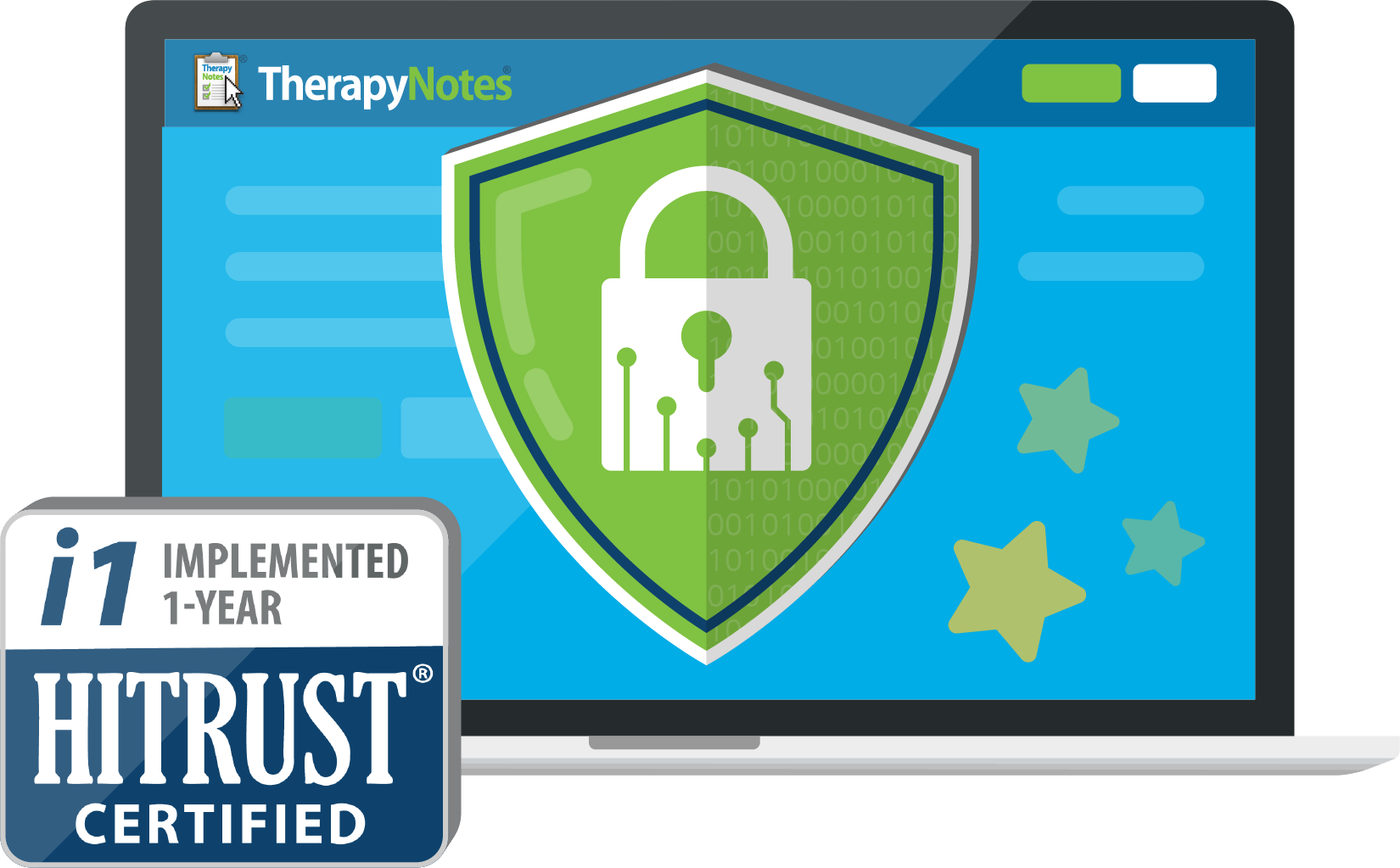The Therapist's Telehealth Guide for COVID-19
By TherapyNotes, LLC on May 6, 2020

The ongoing novel coronavirus (COVID-19) outbreak has positioned telehealth as a necessary innovation in the continuous, safe provision of health care. The federal government has expanded telehealth services in the face of COVID-19 as a tool to facilitate the recommended isolation and social distancing techniques that curtail the spread of the virus. Telehealth allows providers to meet clients where they are, eliminating direct contact while maintaining face-to-face communication, and boasts additional benefits such as maintaining regular sessions with clients who are away on travel or confined to their homes and allowing clients to undergo treatment in the location most comfortable to them.
Telehealth Training Resources
For many behavioral health professionals, telehealth may be unfamiliar territory and present numerous challenges related to becoming acquainted with new technologies and adapting modalities to a new medium. The need for swift uptake may be overwhelming, but there are ample resources available to help.
While there is no legal certification requirement to perform telehealth sessions, many professional behavioral health associations such as the American Psychological Association (APA), National Association of Social Workers (NASW), and American Counseling Association (ACA) emphasize that competence, which demands adequate training, is essential for the ethical provision of telehealth services. We've gathered the following resources for building telehealth competency:
- Telehealth for Mental Health Professionals: 2-Day Distance Therapy Training from PESI
- Board Certified TeleMental Health Provider credential from the Center for Credentialing and Education (CCE)
- Telemental Health Certification from Person Centered Tech
- Certificate Program in TeleMental Health and Digital Ethics from the Zur Institute
Additionally, while some states are increasing flexibility around license requirements and allowing for out-of-state providers to deliver services across state lines, this may not be the case everywhere. Check with the licensing boards of the state where the client is located to see what rules are currently in place. Further, consider your liability insurance. Confirm that telehealth and cross-state services are covered under your policy before you get started. In most cases, you will have to demonstrate competence in telehealth service delivery.
Above all else, make sure to refer to the rules of your licensing board and the ethical standards of the associations you're affiliated with. Check out Allison Puryear's video Online Therapy Now with Roy Huggins and the post To Practice Telemental Health, Am I Required to Receive Training? from Person Centered Tech for more insight.
Updated 7/21 Telehealth Platforms
On March 17, 2020, the Department of Health and Human Services (HHS) announced that the Office for Civil Rights (OCR), the entity responsible for enforcing HIPAA regulations, is suspending enforcement for noncompliance in the good faith provision of telehealth services. This means that any private communication program such as Skype and FaceTime may be considered a viable tool for providers to meet with clients without the risk of penalties during the COVID-19 national emergency. For full details, read the Notification of Enforcement Discretion from the HHS.
Regularly, however, HIPAA requirements, best practices, state requirements, and ethical guidelines apply to telehealth just as they do to in-person sessions. You must continue to ensure confidentiality and protect client information. As such, if at all possible during the emergency period, we strongly recommend using HIPAA-compliant services. This includes obtaining a business associate agreement (BAA) from your telehealth vendor. Take time to carefully consider your choices to ensure the best possible long-term outcomes for you and your clients.
Update TherapyNotes™ Telehealth is live, and it's completely free for one-on-one sessions! With TherapyNotes™ Telehealth, you can securely and reliably meet clients remotely with a solution integrated directly with TherapyNotes™ and TherapyPortal™. Practice Administrators can enable TherapyNotes™ Telehealth for all clinicians in your practice. Simply click the User Icon > Settings > Telehealth and select the Enable telehealth checkbox. Learn more about our telehealth solution.
Because both clear verbal communication and body language are crucial to providing treatment in mental and behavioral health care, clear audio and responsive video are imperative in telehealth sessions. It's important to note that telehealth platforms have been experiencing unprecedented traffic since the onset of COVID-19, which may result in connectivity issues. To mitigate these issues, we recommend muting the audio of your telehealth software during the session and calling your patients on the phone to maintain clear, consistent audio. Alternatively, be sure to confirm your patient's phone number at the beginning of the session so that you may call them if your telehealth session is disconnected.
Billing for Telehealth Sessions
In the face of COVID-19, Medicare has temporarily removed some restrictions on telehealth services based on your and your client's locations, allowing more providers to be reimbursed. However, many commercial payers still require a specific platform to be used or a special attestation form to be completed and approved before services are rendered. Requirements are changing daily as response to COVID-19 progresses, so check with your payer representative or your payer's website for the latest information. You may also refer to the Center for Connected Health Policy's post Telehealth Coverage Policies in the Time of COVID-19 for the current state of fee-for-service policies.
Reimbursement for telehealth is often dependent on including special information on insurance claims. Typically, billing for telehealth sessions requires the Place of Service Code 02 and specific modifier codes (usually 95 or GT), depending on the payer.
In TherapyNotes™, you can automatically apply both the 02 Place of Service Code and the necessary modifiers to telehealth sessions by creating an alternate practice location. To do this, you must have the role of Practice Administrator. Navigate to your Multiple Practice Location settings and add a location called Telehealth. Select 02 - Telehealth from the Place-of-Service Code dropdown, and if your payers use the same modifiers, use the Default Modifiers fields to enter modifier codes 95 or GT as required, which indicate that the service was delivered via audiovisual technology. Be sure that all appropriate scheduled appointments have the Location set to Telehealth, and your Place of Service code and modifier codes will automatically be added to your claims for those dates of service.
If your payers require different modifiers, you can manage modifier codes using Clinician Billing Settings Overrides. For each clinician who will be rendering telehealth services, navigate to the Billing tab of their profile. In the Payers table, click the Create link to the right of the corresponding payer, then enter the correct modifier codes for telehealth in the Default Modifiers fields. Every claim for the clinician and payer will automatically include the set modifier codes.
For additional guidance, visit our help center and read Multiple Practice Locations and How To Apply a Modifier.
Be aware that when it comes to client payments, some payers are waiving co-payments, but others are not. Additionally, telehealth services may have a different co-pay amount. Contact the payer or use the Real Time Eligibility feature in TherapyNotes™ to check for co-pay information at the time of service. However, please note that payers are updating their guidelines rapidly, and those in place today may not be the same as those in place at the time the claim is processed. Once you receive the EOB or ERA from the payer, you will know the correct amount the patient is responsible for.
You can collect patient amounts from your clients without the client setting foot in your office using integrated credit card processing to securely charge their credit card on file. You can receive the card number over the telephone and put it on file in TherapyNotes™, either during your telehealth session or in advance. You can also do this currently with a custom PDF form, if desired. We are working on the means to accept credit card details directly on the portal through an integrated form.
If you want to save time posting payments, get responses from payers faster, and reduce your dependency on postal mail, we encourage you to use the Electronic Remittance Advice (ERA) features to receive your payment details from payers electronically.
Updated 3/31 New Telephone Place of Service Code
In response to the ongoing public health challenges, many payers have expanded coverage of telehealth services. Some payers are allowing for only audiovisual treatment, while others are expanding coverage to include telephone-only services, such as check-ins or circumstances when audiovisual services are not available. To effectively differentiate what method of service was used, payers are updating their requirements for modifiers and place of service codes. The most common modifiers for telehealth are GT and 95, both of which indicate that the service involved a visual component. To indicate that the service took place only by phone, the place of service code 10 is used most often with the modifier code 93 to represents this modality —though this may vary by payer. TherapyNotes™ has been updated to offer this new place of service code in Multiple Practice Locations settings.
Updated 4/16 New Medicare Billing Guidance
In a recent (4/9/20) Q&A Medicare update, the interim final rule with comment period (IFC) directed physicians and practitioners who bill for Medicare telehealth services to report the place of service code that would have been reported had the service been furnished in person. This will allow their systems to make appropriate payment for services furnished via Medicare telehealth which, if not for the Public Health Emergency (PHE) of the COVID-19 pandemic, would have been furnished in person. They believe this interim change will maintain overall relativity under the Physician Fee Schedule for similar services and eliminate potential financial deterrents to the clinically appropriate use of telehealth. During the PHE, the CPT telehealth modifier 95 should be applied to claim lines that describe services furnished via telehealth.
Medicare will pay the same amount for telehealth services as it would if the service were furnished in person.
Regarding how long practitioners will be able to bill using these new flexibilities, the telehealth waiver will be effective until the end of the PHE as declared by the Secretary of Health and Human Services on January 31, 2020. Billing for the expanded Medicare telehealth services, as well as for the telephone assessment and management, telephone, evaluation and management services, and additional flexibilities for communications technology-based services (CTBS) are effective beginning March 1, 2020, and through the end of the PHE.
For more information, you can read directly from the COVID-19 Interim Final Rule FAQs page.
Updated 4/16 Additional E-Visit Coding Information
In all types of locations including the patient's home, and in all areas (not just rural), established Medicare patients may have non-face-to-face patient-initiated communications with their doctors without going to the doctor's office by using online patient portals. These services can only be reported when the billing practice has an established relationship with the patient. For these e-visits, the patient must generate the initial inquiry and communications can occur over a 7-day period. The services may be billed using CPT codes 99421-99423 and HCPCS codes G2061-G2063, as applicable. The patient must verbally consent to receive virtual check-in services. The Medicare coinsurance and deductible would apply to these services.
Clinicians who may not independently bill for evaluation and management visits (e.g., physical therapists, occupational therapists, speech language pathologists, clinical psychologists) can also provide these e-visits and bill the following codes:
- G2061: Qualified non-physician healthcare professional online assessment and management, for an established patient, for up to seven days, cumulative time during the 7 days; 5–10 minutes
- G2062: Qualified non-physician healthcare professional online assessment and management service, for an established patient, for up to seven days, cumulative time during the 7 days; 11–20 minutes
- G2063: Qualified non-physician qualified healthcare professional assessment and management service, for an established patient, for up to seven days, cumulative time during the 7 days; 21 or more minutes
Using a Patient Portal
A patient portal will be a vital tool throughout the COVID-19 emergency to offset the loss of in-person communication. TherapyPortal™, the custom portal included with your TherapyNotes™ subscription, allows you to continue to share and collect paperwork, request electronic signatures, and more without seeing clients directly. You may also give your clients the ability to manage their existing appointments and request new appointments online. Your TherapyPortal™ portal will also be required in order to use TherapyNotes™ telehealth. For more information, visit our help center and read TherapyPortal: Your Custom Client Portal.
We will continue to update this article as new information and advancements become available. Stay safe!
* The content of this post is intended to serve as general advice and information. It is not to be taken as legal advice and may not account for all rules and regulations in every jurisdiction. For legal advice, please contact an attorney.
Get more content like this, delivered right to your inbox. Subscribe to our newsletter.
More Content You'll Enjoy

Medicare Telehealth Update: New In-Person Visit Rules Effective January 2026

Understanding Medicare's Inclusion of MFTs and MHCs: An Informative Guide for Therapists
